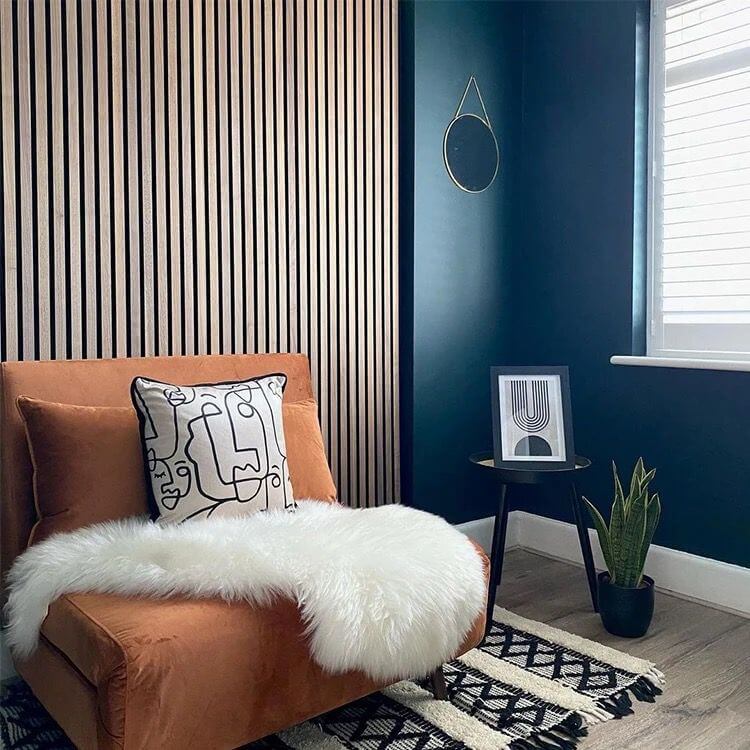Wooden slats are a popular choice in interior design, offering both aesthetic appeal and functional benefits. However, a common concern among homeowners and designers is whether these slats generate noise. Understanding the factors that contribute to noise in wooden slats and implementing effective solutions can help maintain a peaceful environment.
Understanding Wooden Slats
Wooden slats are narrow, flat strips of wood used in various applications, including wall paneling, bed frames, and furniture. They are valued for their natural beauty, durability, and versatility. In wall paneling, wooden slats can enhance acoustics and add a modern, textured look to interiors.
Do Wooden Slats Generate Noise?
Yes, wooden slats can generate noise under certain conditions. The primary causes of noise include:
- Loose Connections: Over time, fasteners like screws or nails can loosen, causing slats to move and create squeaking sounds.
- Friction Between Surfaces: Wood-on-wood contact, especially when slats rub against each other or the supporting frame, can produce noise.
- Environmental Factors: Changes in humidity and temperature can cause wood to expand or contract, leading to creaking sounds.
Preventing Noise in Wooden Slats
To minimize or eliminate noise from wooden slats, consider the following strategies:
1. Secure All Fasteners
Regularly inspect and tighten all screws, nails, or bolts securing the slats. Ensuring a snug fit reduces movement and potential noise.
2. Apply Lubrication
Use a wood-friendly lubricant, such as beeswax or candle wax, on contact points where slats meet each other or the frame. This reduces friction and associated noise.
3. Add Padding
Insert soft materials like felt pads or fabric between slats and the frame to cushion contact points and dampen noise.
4. Control Environmental Conditions
Maintain consistent indoor humidity and temperature levels to prevent wood expansion and contraction. Using a humidifier or dehumidifier can help stabilize conditions.
Benefits of Wooden Slat Wall Panels
Beyond addressing noise concerns, wooden slat wall panels offer several advantages:
- Aesthetic Appeal: They add warmth and texture to interiors, enhancing visual interest.
- Acoustic Properties: Wooden slats can improve room acoustics by absorbing and diffusing sound.
- Sustainability: Wood is a renewable resource, making it an eco-friendly choice for interior design.
Choosing Quality Wooden Slat Panels
Selecting high-quality wooden slat panels is crucial for durability and noise reduction. Some companies offer a range of premium wood paneling options, including:
- Natural Oak Wood Wall Panels: Known for their strength and classic appearance.
- Walnut Wood Wall Panels: Valued for their rich, warm tones.
- Black Wall Panels: Provide a modern, sophisticated look.
These panels are designed for easy installation and can enhance both residential and commercial spaces.
Installation Tips for Wooden Slat Panels
Proper installation is key to preventing noise and ensuring longevity:
- Prepare the Surface: Ensure walls are clean, dry, and level before installation.
- Use Appropriate Fasteners: Select screws or nails suitable for the wall material and panel weight.
- Follow Manufacturer Guidelines: Adhere to specific installation instructions provided by the panel manufacturer.
Maintenance of Wooden Slat Panels
Regular maintenance helps preserve the appearance and functionality of wooden slat panels:
- Cleaning: Dust panels regularly with a soft cloth. For deeper cleaning, use a damp cloth with mild soap, avoiding excessive moisture.
- Inspection: Periodically check for loose fasteners or signs of damage, addressing issues promptly to prevent noise.
Conclusion
While wooden slats can generate noise due to factors like loose connections and environmental changes, proper installation and maintenance can effectively mitigate these issues. By selecting quality materials and following best practices, homeowners and designers can enjoy the aesthetic and functional benefits of wooden slat panels without the concern of unwanted noise.
FAQs
1. Can wooden slats in bed frames cause noise?
Yes, if the slats are loose or rubbing against the frame, they can produce squeaking sounds. Ensuring all components are securely fastened can help reduce noise.
2. How can I stop my wooden slat wall panels from creaking?
Applying a wood-friendly lubricant to contact points and adding padding between slats and the frame can minimize creaking.
3. Do environmental changes affect wooden slat noise?
Yes, fluctuations in humidity and temperature can cause wood to expand or contract, leading to noise. Maintaining stable indoor conditions can help prevent this.
4. Are wooden slat panels suitable for improving room acoustics?
Absolutely, wooden slat panels can enhance acoustics by absorbing and diffusing sound, making them a popular choice for media rooms and studios.
5. How often should I maintain my wooden slat panels?
Regular dusting and periodic inspections for loose fasteners or damage are recommended. Address any issues promptly to maintain the panels’ appearance and functionality.








